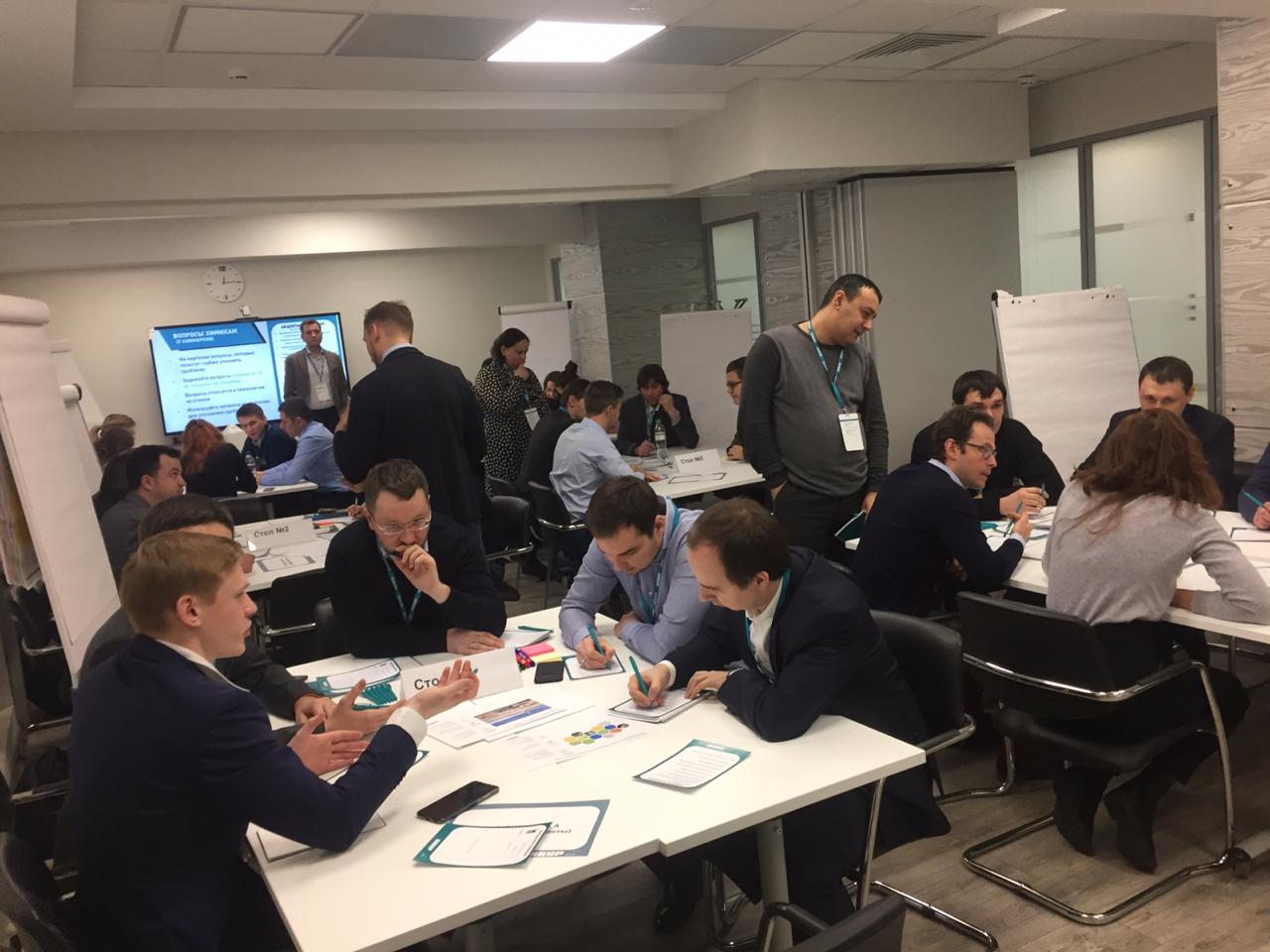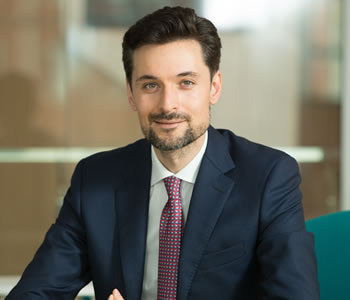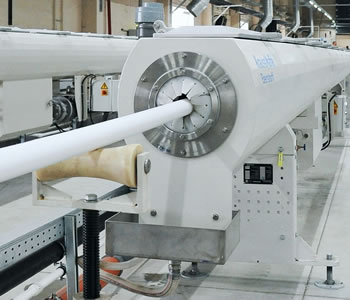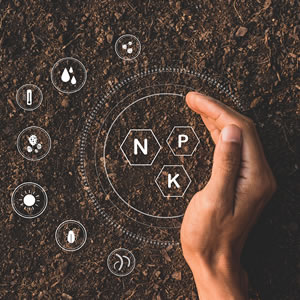The origin of sprints
This special format for generating and developing new ideas was first tested in IT. The new method was invented for developers to tackle ambitious but largely unfamiliar tasks in the absence of a CLEAR plan of action. For instance, Facebook was created through sprints when its team faced a challenge with multiple unknowns.
The sprint format provides the flexibility required to handle multiple unknowns
“We have borrowed sprints fr om the IT industry as an exciting way to develop ideas at earlier stages of projects related to new products, research, CAPEX and investment,” said Vladimir Batkhin, Senior Project Manager of New Projects and Development Opportunities at SIBUR. “This approach facilitates creative teamwork in high uncertainty contexts. Of course, we rethought and adapted sprints to our Company.”
SIBUR’s most famous sprint, the Mendeleev Sprint, was named after the great Russian scientist, who succeeded in combining knowledge and intuition to achieve a breakthrough.
What is the Mendeleev Sprint?
Goal:
-
The development of new ideas, products, technologies or concepts at early stages
-
5–12 teams
-
3 months of autonomous teamwork
-
40 hours of training
-
12 coaches from related functions (marketing, technical expertise, etc.) Personal supervisors for each sprint team
Result:
- A finished solution submitted for a feasibility study or for R&D (research and development) to decide on the launch
History of the Mendeleev Sprint
The first Mendeleev Sprint took place in 2019. A total of three such sprints have been run as of autumn 2020, with a fourth scheduled to be held before year-end. The largest sprint involved 12 teams. Later, the number of teams was reduced to five due to COVID-19 restrictions.
Each sprint comprises several phases: planning, implementation, development and launch of ready business cases.
“First, we sel ect ideas to be fed into the sprint for development, along with team members who will develop these ideas and translate the best ones into specific business cases,” said Vladimir Batkhin. “During the second phase, teams brought together from different units of SIBUR focus entirely on the task at hand, for example, to launch a new product that the company has never manufactured, but sees a market opportunity for. All that the team has is the minimum input data: the product, a tentative value for SIBUR’s portfolio and economic prospects. All the rest – location and capacity of the new facility, technology and potential partners, licensors, site requirements, feedstock supply, quality of the future product, analysis of market competition and potential benefits for SIBUR, pricing policy, relevance and value of the project for the Company and shareholders, informed cost-benefit analysis and other details – need to be explored and presented by the teams in their business cases. An abstract idea is transformed into a specific, thought-through business case. The sprint format provides the flexibility required to handle multiple unknowns. Teams can change their hypotheses, details and configurations every week over three months until they come up with the ideal case.”

This is how the first offline Mendeleev Sprint was run in March 2019.
260 applications for 22 vacancies in the Mendeleev Sprint teams were received in 2019 – over ten applicants per vacancy. Participants are selected in several phases. The applicants need to send the team supervisors a CV and cover letter.
SIBUR employees gain unique experience of working in a new format, in a new team and in a new location. Over three months, participants undergo intensive training, broaden their horizons and gain diverse knowledge, resulting in rapid professional growth
Team supervisors examine the CVs, in particular to make sure the candidates fit in with the sprint’s profile. Eligible applicants are interviewed by supervisors and accelerator leaders, who assess their expertise and qualifications to make sure they meet the sprint’s requirements. The assessors are also looking for candidate motivation, performance, flexibility, agility and willingness to relocate to another region for three months (wh ere necessary). Before the pandemic, these interviews were held both in person and online, but since the lockdown they are only run remotely. Teams are formed from participants who have successfully passed an interview.
Once the teams are ready, participants contact their managers to obtain permission to take part in a sprint. Team members are seconded to Moscow to participate in the sprint, without having to focus on their normal job (this rule also applies to Moscow residents). The secondees’ performance is appraised by project and sprint leaders, while their scores are counted in their quarterly performance appraisal.
Performance ceremonies
To maximise the team’s operational efficiency within a tight timeframe, the creators of the Mendeleev Sprint designed a special set of ceremonies.
For each team:
For all teams:
-
Standups: during the weekly meeting, team members, supervisors and the administrator determine the overall status of all teams, address common issues and questions, adjust methodologies and share their progress and achievements
Traction meetings are held after each sprint month. Teams share their progress on the project with corporate leadership, present an overarching hypothesis, analyse the outcomes and adjust focus areas
Demo day: the final meeting on the sprint outcomes. Teams present the final business case configuration to a wider representation of the Company’s Management Board and the Board of Directors. A decision is made based on the demo day’s results whether the business case will continue to be refined and implemented or will be shelved in the Library of Ideas
SIBUR clients and their partners are involved in demand development sprints. Therefore, work is based on ideas and concepts that arise both within the Company and are generated externally, by invited participants
“All ceremonies are central to effective and productive team performance,” stressed Vladimir Batkhin. “Daily and weekly meetups help adjust the direction in time and streamline work. A discussion of their respective team’s achievements encourages team members to invest more time and effort into their team performance to keep up with the others. In turn, intensive training (40 hours at the early stages when sprint participants learn the knowledge required for the project) and weekly contact sessions with functional coaches help team members improve their professional qualifications and competencies and to substantially improve the quality of the case study. The teams also thoroughly prepare for traction meetings and the demo day as they feel their responsibility and importance of their job.”
Business case focus areas
A decision is made on the case after the demo day. If the business case is accepted and represents a new product (technology), then the project is handed over to the technology development unit within the R&D cycle. The project is supervised by a specialised SIBUR team. Some sprint participants can join this team or help the team as experts or advisors. Later on, the development transitions to the investment cycle.
If SIBUR purchases the product (technology) from licensors, then the case is handed over to standard investment stakeholders: the business development team, corporate centre or a specific facility. A specialised team of professionals is responsible for the feasibility study, design, budget adjustments and other phases of the investment process. Final investment decisions are then made and development is launched.
If the business case is shelved, then it is kept in the Library of Ideas – a smart shelf for storing all interesting and forward-looking ideas. Any of these ideas may be implemented at any point in the future.
Benefits of the Mendeleev Sprints for employees and the Company
As a tool, sprints significantly reduce the lead time for developing ideas and business cases and substantially increase the number of ideas and projects that can be developed in a short period of time. The new format helps to bring more specialists from different units of the Company into highly intensive and effective work on projects. The exercise involves researchers, top managers, financiers, engineers and many other SIBUR professionals, which allows various hypotheses and theories to be tested, new technology and knowledge-intensive projects to be developed, and business processes to be improved. This process ultimately drives not only the Company’s growth, but also the development of the industry as a whole.
Demand development Sprints provide a better understanding of partners’ businesses and the needs of end consumers
SIBUR employees gain unique experience of working in a new format, in a new team and in a new location. During the three months of the sprint, participants undergo intensive training, broaden their horizons and gain diverse knowledge, resulting in a rapid professional growth.
Anton Yakunin, preproduction engineer at Tomskneftekhim, considers the idea of the Mendeleev Sprints bulletproof: “the market is constantly evolving, new products are needed”.
Irina Kuzmina, Head of Project Development at NIOST, agrees that the Mendeleev Sprints provide an environment that offers as many opportunities to unlock potential as possible. In her opinion, the initiative gives participants a strong impetus for both professional and personal growth.
Alexey Kryuchkov (expert in long-term goal setting and continuous improvement) notes the benefits of working in this format: “What we did during the sprint was a million miles away from our normal lives. We were brought together, we were given a problem and asked to solve it. During our Mendeleev Sprint, for example, I went parachuting for the first time in my life and am now planning to pilot a plane.”
SIBUR management also highly values the performance of the Mendeleev Sprints. Dmitry Stepkin (Director, Corporate R&D) noted that the idea to connect more bright minds to project development has been successfully implemented. “Now that we see such projects significantly improving people’s competencies, we are also noticing a significant educational boost from the Mendeleev Sprints.”
Sergey Komyshan (Member of the Board, Executive Director at SIBUR) emphasised that as a result “we have moved forward on certain business ideas, but have also seen noticeable improvements in the professional level of our colleagues. I am very pleased to see those who have unlocked their potential. This is just as valuable in a Mendeleev Sprint as finding good business ideas.”
New types of sprints
The Mendeleev Sprints became the starting point for the development of sprints as an effective tool. In the autumn of 2019, SIBUR held its first sprint to boost demand for existing products and solutions. The key purpose is to offer and build cases for the development and new applications of these solutions.
Today, demand development sprints are a common tool for industry sales and an annual tradition
The Mendeleev Sprints mainly differ in that these demand development sprints involve SIBUR clients and their partners. Therefore, work is based on ideas and concepts that arise both within the Company and are generated externally, by invited participants.
The first demand development sprint involved over 75 participants, who worked in cross-functional teams, including SIBUR employees and representatives of partners and clients. After a series of brainstorms, 24 idea cases focused on developing demand for the Company’s existing solutions were put into the idea funnel. The sprint lasted three months, but the participants worked in parallel with their core jobs, without full autonomous involvement.
13 ideas from the sprint went into development. Additionally, some cases inspired a number of initiatives to boost demand for polymer solutions for the new Industry Sales. Construction function. Today, demand development sprints are a common tool for industry sales and an annual tradition.
We are currently running a demand development sprint for the road construction segment. Brainstorming with clients gave rise to 18 ideas, with eight cases being close to the final stage of development.
“This format not only helps us identify potential and find new opportunities in existing solutions, but also allows us to build a fundamentally different approach to engagements with our clients and key partners,” emphasised Yulia Rumyantseva, the organiser and coordinator of demand development sprints and Head of Industry Sales. Construction at SIBUR. “Sprints provide a better understanding of partners’ businesses and the needs of end consumers. We see that they are an effective tool that has vast scope for development and rollout. Today, such sprints are becoming increasingly common in other polymer product segments, e.g. packaging. It is also important that the ideas that emerge here can gain traction and get into the Mendeleev Sprints. We already have the first feedback fr om external participants: they express their interest, because this format, among other things, helps them discover new insights and opportunities.”
Download PDF








The Mendeleev Sprints – facts and figures:
Three Mendeleev Sprints have been held over 1.5 years, with 26 ideas developed.
Four projects are preparing for the FID phase and three more are at the R&D decision-making phase.
Five projects are under development, and six were sent to SIBUR’s Library of Ideas